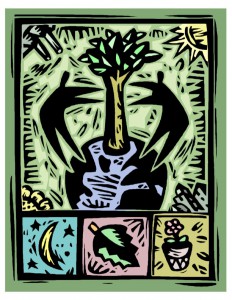 “I’ll support program activities, but I won’t pay for your salary,” a new board member recently explained to Donald K. Rhoten, CFRE, President of the Meadville Medical Center Foundation (www.mmchs.org) in Meadville, Pennsylvania. Instead of avoiding further discussion of a potentially touchy topic, Rhoten seized the opportunity to have a deeper discussion about overhead. “I explained that I respected his choice, but I also asked him to consider this: for many local nonprofits, it’s the overhead that’s actually providing the service. In such cases, overhead is an asset.”
“I’ll support program activities, but I won’t pay for your salary,” a new board member recently explained to Donald K. Rhoten, CFRE, President of the Meadville Medical Center Foundation (www.mmchs.org) in Meadville, Pennsylvania. Instead of avoiding further discussion of a potentially touchy topic, Rhoten seized the opportunity to have a deeper discussion about overhead. “I explained that I respected his choice, but I also asked him to consider this: for many local nonprofits, it’s the overhead that’s actually providing the service. In such cases, overhead is an asset.”
An asset?
Rhoten asked the board member to consider the example of a soup kitchen run by a paid staff of one. That person’s salary would technically be considered an overhead expense, but without her, the soup kitchen would not be able to operate. “If I were choosing to support that organization, I would give to pay for her salary,” he explains, “because she is the organization.”
Rhoten’s argument showed the board member the value of paying for overhead, and he believes that other nonprofits can use the same approach to make the case to donors that they should think of overhead not as a cost, but as a means to a greater end.
Rhoten says fundraisers and executives should welcome opportunities to make the case for overhead. “Those questions are not bad questions,” he says. “They show that people are engaged. The donors we have who are the most active and who stay with us for the long term are the ones who are asking those questions. They’re not just going to write a check and go away.”
The challenge, he says, is to get people to see that overhead can provide long-term stability and even grow an organization.
As it turns out, the board member needn’t have been concerned about paying for Rhoten’s salary. Meadville Medical Center, an independent community hospital that serves Crawford County and the surrounding area in northwest Pennsylvania, funds 100 percent of the foundation’s overhead expenses. While this frees Rhoten from having to make an explicit case for overhead support, it also allows him to point to the benefits that such support provides to the foundation. Thanks to the hospital’s support, in 2013, Rhoten and his small staff were able to focus their efforts on raising $500,000 in support of myriad activities, including purchasing a new vehicle to deliver patients to the hospital’s oncology institute, constructing a new hospice house and dental center, purchasing adaptive bikes for disabled children, and providing new training mannequins to hospital physicians and nurses.
“Our overhead truly adds value to our hospital, our community’s healthcare services and our community’s overall way of life,” says Rhoten. “Without it, we could do nothing” — much like the soup kitchen example.
IRS Filings are Not the Whole Story
Just like his skeptical board member, Rhoten used to feel differently about overhead. “Initially my perception of overhead was in line with the myth,” he says, referring to the traditional view of administrative expenses as an accurate measure of a nonprofit’s performance. Rhoten faced questions from donors seeking justification for overhead expenditures. “But I quickly realized that ‘overhead’ is just a catchphrase,” he says. Instead, now Rhoten argues that nonprofits need to think about fundraising as a continuum that includes both administrative and program expenses. “We have to think of fundraising not as asking donors for money, but as helping the organization provide the best service,” he says. In other words, overhead is just as vital to mission success as program funds.
That is why the focus on one or two specific numbers, such as the percentage of overhead, can be so misleading. While the Meadville Medical Center Foundation’s IRS Form 990 filings provide donors with a broad-brush view of the foundation’s revenue for a given year, the filings don’t reflect gifts that were made to the hospital itself or to related organizations. As a result, donors who rely on the foundation’s 990s for assessing the foundation’s performance might see very little revenue in some years, and even what appear to be losses in others.
“I think that the transparency that the 990 provides is very important, but it affords people the opportunity to create misconceptions,” Rhoten points out. “The 990 is looking at dollars. I wish there was an equivalent document for looking at mission yield.”
Until such a form is developed, Rhoten will continue relying on old-fashioned persuasion to sway skeptical donors to his conviction that overhead is truly an asset, not an expense, for his foundation. “The questions may demonstrate the donor’s interest,” he says, “but the answers make a relationship.”
This post was adapted from “Not a Money Pit! How Nonprofits Can Convince Donors and Funders that Outcomes Can be Achieved More Effectively When They Support Overhead along with Programs,” by Paul Lagasse, Advancing Philanthropy, Spring 2014 (reprinted with permission) You can read the whole article here.







